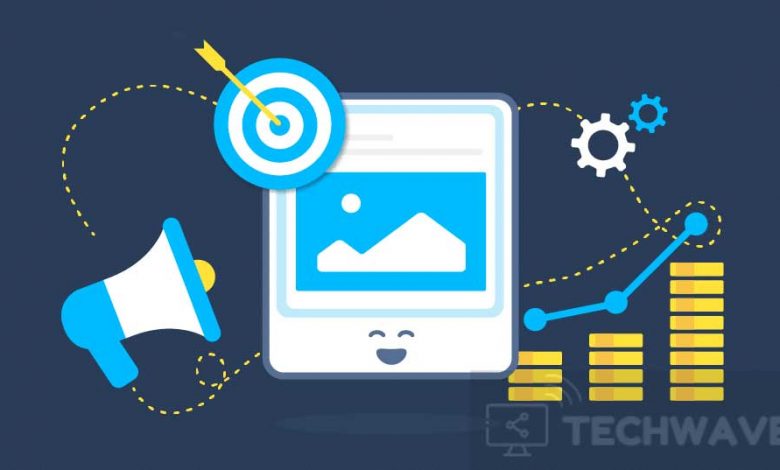Tips to Develop Your Paid Social Campaign

According to Datareportal, almost 57% of the global population actively uses social media, and, as a result, businesses are gaining enormous revenue. But how do they accomplish this?
Many businesses use paid social campaigns to increase their reach to a larger target audience and convert these potential customers into consumers. eMarketer estimated that the U.S. social media ad spendings would increase by 21% in 2021. This statistic shows how lucrative social channels are for advertising.
Want to boost your business’s reach and revenue through social media? Here are five tips for developing your paid social campaign.
Table of Contents
Define Your Goal
Identifying a goal is a crucial step as this helps you to measure the results while simultaneously providing some direction. For instance, when choosing a platform or type of content to share, it is important to have a goal in mind to help you determine which measure will be most effective to achieve this.
That’s why when you begin to build a paid ad on LinkedIn or Facebook, the first thing to consider is the objective.
There are three broad objective categories from the modern customer buying cycle that you can choose from. These include:
- Awareness
- Consideration
- Conversion
The objective category you choose will then determine which channels and content types you will use. For example, if your objective is brand awareness, you should elect to share ungated content like fun videos or infographics to grab the attention of new potential customers.
However, if you want to increase your leads, you will use gated content like whitepapers and guides. This will gather lead information to help you realize conversion objectives.
Identify Your Target Audience
When it comes to marketing your business to potential customers, if you fail to secure a niche target audience you may spend money on ads that are too general and ineffective. In order to avoid this, it is essential to develop these ad campaigns with a specific audience in mind.
To pinpoint a target audience, it’s important to consider who would benefit most from your products or services. By narrowing down the scope of your audience to a niche group, you can develop ads that are specific to these potential customers and thus, spend on your ad campaigns that will be more effective and efficient.
Your target audience will depend almost entirely on what you are trying to sell. But how do you identify and understand this niche group?
One way to do this is to create a user persona by interviewing some of your existing customers to answer the following questions:
- Who are you? (Name, background, occupation, responsibilities)
- What do you need? (The problem they are facing and what their expectations are for resolution)
- What challenges are you facing that inhibit you from resolving this problem? (Time, money, etc.)
With this information, you can narrow down this general audience to a more specific “persona” (which will become your target consumer). From here, you can use this niche understanding of your ideal client to develop your targeting strategies when creating content or advertising.
Select the Right Platform
Another key step in developing your paid social campaign is determining which channel will be most appropriate and effective in advertising to your desired customer. Defining your objectives and target audience will help you settle on the right platform. However, there may be more than one platform that could deliver results.
So, how do you determine which social media channel is the best choice?
After realizing that you can connect with your potential customers on multiple channels, research each platform in detail. This will help you pinpoint what will work best for your business.
For instance, LinkedIn can propel ads about industry-focused events, which may not deliver the same results through Facebook. Because ad campaigns perform differently depending on the social media channel, you need to exercise care when determining which is best for your business’s advertising efforts.
Typically, most businesses will settle on Facebook since it covers all three objectives and has a wide range of audience demographics. Nevertheless, your campaign can also perform well on LinkedIn, Twitter, YouTube, or Instagram.
Create Your Campaign
Now it’s time to develop and upload your ad elements! While your campaign structure can affect if your ad will be approved by the specific social media platform, you need to customize your ad to reflect your business’s culture and to attract your target audience.
Remember, the main goal of your campaign structure is to generate traffic which can be done by incorporating video clips, photos, or click-through links alongside the post message. As a result, you can optimize your social campaign through the following strategies:
Leveraging Creative Variations
Developing multiple photos, videos, or messages can be challenging if you are trying to launch an ad quickly, as these processes take time. However, creating different ad variations is crucial to your campaign’s success.
Variations are important as they are customized to niche audiences. Keeping this in mind, it is important that the content within each variation speaks to a specific target audience, so make sure you have different ad variations for each.
Altering Media Creative
Social media is constantly changing and ever-competitive. Therefore you have to be creative if you want your ad campaigns to succeed. Launching new creative propels your ad campaigns and maximizes results, driving new traffic to your business.
You should develop a plan for your creative rotation by selecting a collection of images and descriptions that will appear alongside catchy headlines. Be sure to keep both your content and create unique and fresh.
Measure Your Campaigns
Identifying your audience, generating unique content, and launching your ad campaign are the first essential steps in developing a successful paid social campaign. The final measure you will need to take is to analyze the impact these measures will have on your business. This is why you should have an understanding of the paid social industry benchmarks and use them as the basis for measuring your results.
Whether you are using an automation platform or URLs for your campaigns, you can use these benchmarks to examine how your campaign will perform. This evaluation will help you make necessary adjustments to improve results.
What should you do if you do not see any tangible benefits? First, go back and reevaluate your goals and see whether they were SMART, check your chosen platform, or reconsider your buyer persona. The best thing is that you can use tools to know what is not working.
Final Thoughts
Undergoing the lengthy process of creating ad campaigns that do not deliver results and returns is frustrating. If you take the time to identify the right audience, select a suitable platform, and measure the results, you can avoid this loss.
Remember to run multiple ad variations and incorporate new creatives regularly to maximize results. If your ads are not performing, reach out to experts to seek experienced advice and develop effective ad campaigns.
Follow Techwaver for more Technology News.



